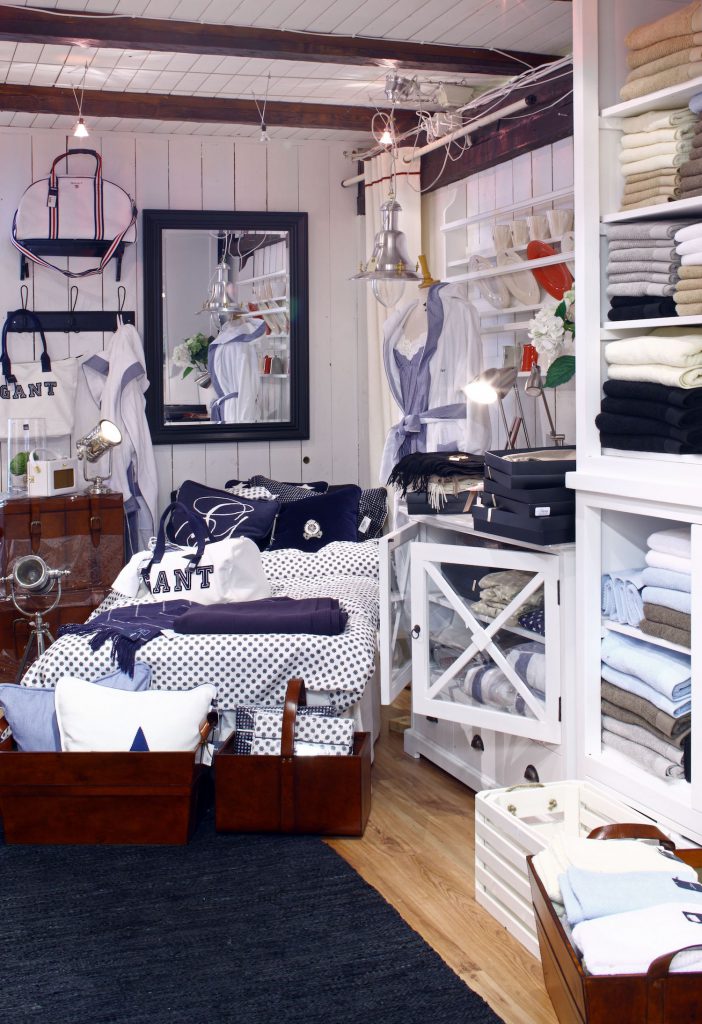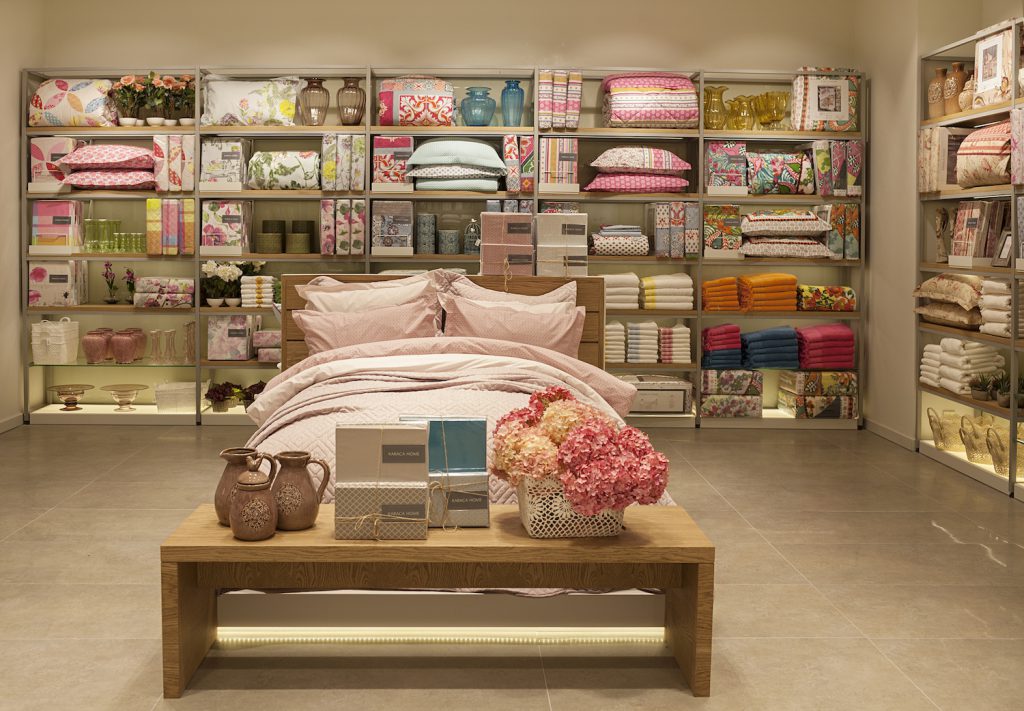by Martin M. Pegler
Visual Merchandising is really a very simple concept to understand. “Visual” refers to sight and “showing” while “Merchandising” is about “selling”. WE—people who believe in and are practitioners of VM—believe that it is very important to show your products in a way that makes the shopping process simple—easy—convenient for the shoppers. It is important that the products are shown at their best—in the best possible way—so that the shopper can find or locate them in the store—look/study/compare the product—make a selection—and then purchase the desired product. THAT is basically what VM is all about!
How you SHOW can affect how you SELL. How you arrange your product offer—which product is featured, which are adjacent to it, where it is located and what signage or information is provided all make a difference. Do you arrange by color? All blue items clustered together—all the red items in a group—no matter where or what they are used for? Or, do you arrange by brand? Or by price: all items under $19.99 or under $35, etc.? Do you show or cluster them by where they may be used—by “end use”—bedroom/bathroom/kitchen/teenagers room? The answer may depend upon your product offer, your space, your store BRAND, your competition. Personally, whenever and wherever possible, I would opt for or recommend the “end use” approach because it is also the best and most convenient and customer-comfortable way to shop and can also include any of the other ways of showing merchandise listed above. Also, it is the most assured way to get “add-on” sales. By showing the “go-with” products that compliment and complement the product, it makes purchasing these items simpler as well. I will explain.
However (or BUT), there are different ways to show “end use” in a store. How you use it will depend upon YOUR BRAND, YOUR LOCATION, YOUR CLIENTELE, YOUR PRODUCT OFFER, and whatever it is that makes YOU—YOU-NIQUE! So, now it is time for SHOW & TELL, and we will explain by showing how two different stores, using very different approaches, are successfully SHOWING TO SELL by presenting their products by “end use.” One store is located in a centuries-old converted barn in a remote part of Finland, while the other is in a new, contemporary mall in a  major city in Turkey. Both are previous gia winners.
major city in Turkey. Both are previous gia winners.
Loviisan Aitta in Rusko, Finland is the dream-come-true of the artist Helena Aho and her architect husband. Together they have created an exciting retail space filled with areas or “rooms” loaded with interesting and unique textures, architectural features and strange nooks and crannies. The merchandise seems to have been “tossed” together in a very casual manner that says to an adventurous shopper, “Come in and see if this will be your lucky day.” It is like going on a “treasure hunt” where you are guaranteed to be a winner. On the bed, strewn with color-coordinated items and surrounded by all sorts of possible “go with” things and rehabbed furniture that serve as fixtures but are also for sale—a special product is “hidden” for the daring shopper. This is a very special shopping experience that will satisfy shoppers willing to venture way out into the country—making an excursion into the past to find products for the future. Though it might seem confusing or too haphazard a presentation for some, for others it is great fun and a great way to “discover” things. As Helena Aho said, “From the very beginning, our brand was based on a very romantic and mystic style. We are very well known for our uniqueness, and that is what we owe our success to.”
Ayşe Demirtepe, the VM director for the Karaca Home store located in the new, up-scaled mall in Istanbul, also shows her product offer in end-use settings—but with a difference. She has no real architectural features or details to work with—just a long, narrow space with lots of open back windows. The floor is set up with recessed areas that are introduced by a graphic and sign as to what might be found inside. Some of the end-use areas that feature the Karaca line of fabrics and bed linens and go-with products include: Baby, Teenagers, Country, Traditional, Bath, Basic and  Modern. What makes Ms. Demirtepe’s presentation different is it is neat, orderly, and carefully planned so that the shopper can see the details as well as the overall effect. Great care is taken to show off the pattern, color and design of the bed linens, the duvets, pillows and such. Sometimes, in a linen chest at the foot of the beautifully made-up bed, there will be a lovely color/pattern coordinated display of bath towels. On the back wall of the niche or area are shelves neatly lined with a carefully edited selection of bedroom accessories that will enhance the ambiance of the room and complement the selected color/pattern of the linens. Though this shopping experience may not have “the thrill of discovery,” it makes up for it with selection and time saved. The options are clearly visible, easy to pick up and load into the shopping cart. And this type of end-use form of VM has another great advantage to the retailer. Since some of the “go-with” items will or can go with other major products, the retailer can show the same item in several different places in the store thus increasing the item’s visibility and opportunity for add-on sales.
Modern. What makes Ms. Demirtepe’s presentation different is it is neat, orderly, and carefully planned so that the shopper can see the details as well as the overall effect. Great care is taken to show off the pattern, color and design of the bed linens, the duvets, pillows and such. Sometimes, in a linen chest at the foot of the beautifully made-up bed, there will be a lovely color/pattern coordinated display of bath towels. On the back wall of the niche or area are shelves neatly lined with a carefully edited selection of bedroom accessories that will enhance the ambiance of the room and complement the selected color/pattern of the linens. Though this shopping experience may not have “the thrill of discovery,” it makes up for it with selection and time saved. The options are clearly visible, easy to pick up and load into the shopping cart. And this type of end-use form of VM has another great advantage to the retailer. Since some of the “go-with” items will or can go with other major products, the retailer can show the same item in several different places in the store thus increasing the item’s visibility and opportunity for add-on sales.
Which—IF either—is right for you? Maybe one or the other or neither or some mixture of the two. Your VM depends on YOUR BRAND, YOUR PRODUCT OFFER, YOUR LOCATION, YOUR CLIENTELE and who or where is YOUR COMPETITION. Whatever your decision—make it YOURS and remember that YOU are a major part of YOU-NIQUE.



